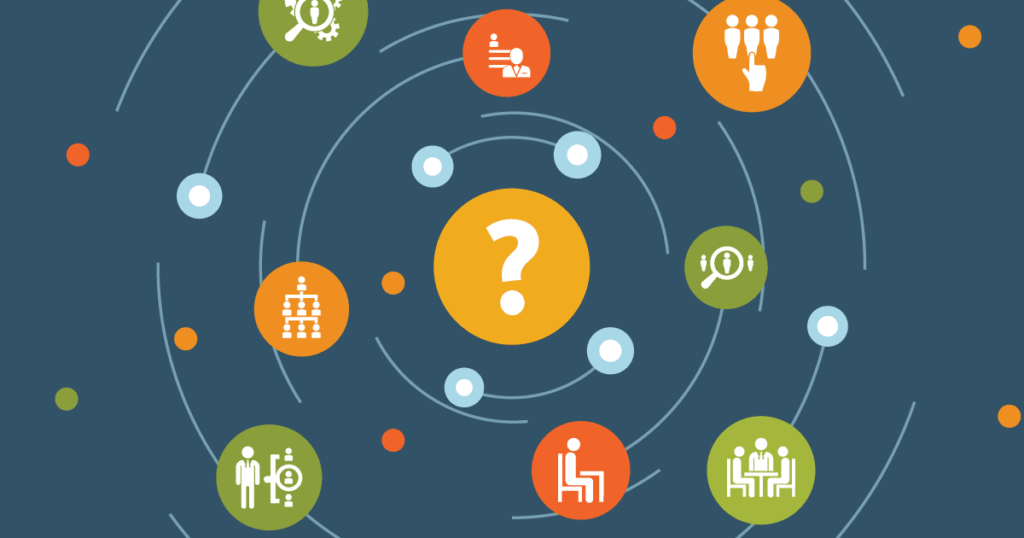The HR life cycle is a comprehensive framework that encompasses the entire journey of an employee within an organization, from recruitment to retirement. It serves as a roadmap for managing various HR processes and activities throughout the employee's tenure. This cycle encompasses critical stages such as recruitment and onboarding, performance management, employee development, and offboarding.
By effectively managing each stage of the HR life cycle, organizations can ensure the well-being and productivity of their workforce while fostering a positive work environment.
In this article, we will explore the different phases of the HR life cycle and discuss their significance in shaping the employee experience.
What is the HR life cycle?

The HR life cycle is a framework that outlines the stages and processes involved in managing employees throughout their entire employment journey within an organization.
It encompasses various activities, from attracting and recruiting talent to offboarding employees. The HR life cycle is crucial for organizations as it ensures a systematic and structured approach to human resource management, leading to improved employee engagement, retention, and overall organizational success.
Importance of a well-structured HR life cycle
A well-structured HR life cycle provides numerous benefits to both employees and organizations. It enables organizations to align their HR strategies with business objectives, leading to effective workforce planning and development. By implementing a comprehensive HR life cycle, organizations can attract top talent, enhance employee productivity, foster a positive work culture, and ultimately achieve sustainable growth.
Explore 5 stages of the HR life cycle

The HR life cycle consists of five key stages:
1. Attracting and Recruiting Top Talent
Can a football team win a match without players? Of course not! Similarly, the recruitment phase is where the company finds the right "players" for its team.
Attracting and recruiting high-caliber talent is the foundation of a successful HR life cycle. It involves developing effective talent acquisition strategies, creating compelling job descriptions, and establishing a strong employer brand.
By leveraging technology and data-driven approaches, organizations can streamline their recruitment process and identify the most suitable candidates for their workforce.
2. Managing New Hires: Induction, Orientation, and Onboarding
Now that we have our "players," it's time to teach them the rules of the game. This is what onboarding is all about.
The onboarding process plays a critical role in setting the stage for a new employee's success. It includes induction, orientation, and onboarding activities designed to familiarize new hires with the organization's culture, values, policies, and procedures.
A comprehensive onboarding process ensures that new employees feel welcomed, supported, and equipped with the necessary resources to contribute effectively from day one.
3. Personal and Professional Development
Now, let's move to the Development stage. This is the stage where an employee, like a budding plant, grows and flourishes.
Investing in the personal and professional development of employees is essential for their growth and the organization's success.
HR professionals should identify the training and development needs of employees and design tailored programs to enhance their skills and knowledge.
By promoting continuous learning and providing opportunities for upskilling, organizations can foster a culture of innovation and improve employee engagement.
4. Maximizing Employee Retention
Imagine a leaking bucket. No matter how much water you pour in, it keeps draining out. Retention is like plugging the holes in that bucket, ensuring that valuable employees stay with the organization.
Employee retention is a key challenge for organizations, and the HR life cycle addresses this through various strategies.
Creating a positive work environment and culture, implementing employee engagement initiatives, and recognizing and rewarding high-performing employees are essential components of maximizing employee retention.
By prioritizing employee satisfaction and well-being, organizations can reduce turnover and retain their top talent.
5. Offboarding Employees
As the saying goes, all good things must come to an end. Offboarding is the process of transitioning an employee out of the organization, whether due to retirement, resignation, or termination.
Managing employee separations and exits is a crucial part of the HR life cycle. Offboarding should be conducted gracefully and professionally to maintain positive relationships with former employees. This process involves conducting exit interviews to gather feedback and improve organizational practices, ensuring a smooth transition for knowledge transfer, and handling all necessary paperwork and legal requirements.
The 14 Steps in the HR Life Cycle

Step 1: Aligning Business Strategy and HR Strategy
In this step, organizations align their HR strategies with overall business objectives. HR
professionals collaborate with leadership to identify key HR priorities and ensure that HR initiatives support the organization's strategic goals.
Step 2: Designing the Organizational Structure
Designing an effective organizational structure involves defining reporting relationships, roles, and responsibilities within the organization. HR professionals work closely with management to create a structure that promotes efficient communication, collaboration, and decision-making.
Step 3: Job and Team Design for Optimal Performance
This step focuses on designing job roles and teams that are aligned with organizational objectives. HR professionals analyze job requirements, define job descriptions, and create teams that leverage individual strengths to maximize overall performance.
Step 4: Strategic HR Planning for Future Needs
Strategic HR planning involves forecasting future talent needs and developing strategies to address them. HR professionals assess workforce gaps, identify critical skills required for future success, and implement recruitment, training, and succession planning initiatives accordingly.
Step 5: Fostering a Strong Organizational Culture and Vision
Creating a strong organizational culture and vision is essential for attracting and retaining top talent. HR professionals collaborate with leadership to define the organization's values, mission, and vision, and implement strategies to promote a positive and inclusive work culture.
Step 6: Effective Recruitment and Selection Processes
In this step, HR professionals develop and implement effective recruitment and selection processes. This includes sourcing candidates, screening resumes, conducting interviews, and selecting the most suitable candidates based on skills, experience, and cultural fit.
Step 7: Seamless Onboarding and Induction Experiences
Seamless onboarding ensures that new hires feel welcomed and prepared for their roles. HR professionals design comprehensive onboarding programs that introduce new employees to the organization's culture, policies, and procedures, and provide necessary resources for a smooth transition.
Step 8: Performance Appraisal and Assessments for Growth
Performance appraisal and assessments are crucial for providing feedback, setting goals, and identifying areas for improvement. HR professionals collaborate with managers to establish fair and objective performance evaluation processes that support employee growth and development.
Step 9: Training and Development Initiatives
Identifying training and development needs is an important step in the HR life cycle. HR professionals assess employee skills gaps, design and implement training programs, and provide learning opportunities to enhance employee knowledge, capabilities, and professional growth.
Step 10: Engagement, Recognition, and Rewards Programs
Engaging employees and recognizing their contributions is vital for maintaining high levels of motivation and job satisfaction. HR professionals develop and implement engagement initiatives, recognition programs, and rewards systems to foster a positive and supportive work environment.
Step 11: Career Management for Employee Growth
Career management involves supporting employees' career aspirations and providing growth opportunities within the organization. HR professionals collaborate with employees to identify career goals, provide guidance and development opportunities, and facilitate career progression.
Step 12: Managing Exits and Offboarding Processes
Managing employee exits and offboarding processes professionally is essential for maintaining positive relationships and protecting the organization's reputation. HR professionals conduct exit interviews, ensure a smooth transition of responsibilities, and handle all necessary paperwork and legal requirements.
Step 13: Continuously Refining and Improving the HR Life Cycle
Continuous improvement is crucial for optimizing the HR life cycle. HR professionals regularly review and refine HR processes, policies, and practices based on feedback, industry best practices, and changing organizational needs.
Step 14: Utilizing HR Analytics for Informed Decision-Making
Leveraging HR analytics and metrics provides valuable insights for making data-driven HR decisions. HR professionals use analytics to measure key HR indicators, track employee performance, and identify areas for improvement.
HR Career Path Tools

To support HR professionals in their career development, several tools can be utilized:
- Organizational and departmental charts help visualize reporting structures and career progression paths within the organization.
- People databases provide insights into employee skills, experiences, and career aspirations, enabling better HR decision-making.
- Evaluating the effectiveness of training programs through feedback and performance metrics ensures HR professionals are equipped with the necessary skills and knowledge.
- Implementing tools specifically designed for HR career path development, such as competency frameworks or HR certification programs, can further enhance professional growth.
FAQs
What are HR cycle components?
The HR cycle typically consists of four main components:
- Recruitment: The process of attracting, sourcing, and selecting candidates to fill job vacancies within an organization.
- Onboarding: The process of integrating new employees into the organization, providing them with the necessary information, tools, and resources to succeed in their roles.
- Development: The ongoing process of nurturing employee skills and competencies through training, coaching, and professional growth opportunities.
- Offboarding: The process of transitioning employees out of the organization, whether due to retirement, resignation, or termination, and ensuring a smooth exit while maintaining positive relationships.
What are the four core HR systems?
The four core HR systems are recruitment and selection, training and development, performance management, and compensation and benefits. These systems form the foundation of human resource management and are essential for effectively managing the employee lifecycle within an organization.
How can organizations improve employee retention during the HR life cycle?
Effective employee retention strategies during the HR life cycle involve creating a positive work culture, providing opportunities for growth and development, offering competitive compensation and benefits, recognizing and rewarding employees' achievements, and promoting work-life balance. By prioritizing employee satisfaction and well-being, organizations can increase employee retention and reduce turnover.
What role does technology play in the HR life cycle?
Technology plays a significant role in streamlining and enhancing various stages of the HR life cycle. It can automate recruitment processes, facilitate onboarding with digital tools and portals, provide learning management systems for employee development, enable performance tracking and feedback mechanisms, and support offboarding processes with efficient documentation and data management. Leveraging HR software and technology solutions can improve efficiency, accuracy, and employee experience throughout the HR life cycle.
Conclusion
In conclusion, the HR life cycle is a comprehensive framework that encompasses various stages and processes crucial for managing the employee journey within an organization. From attracting and recruiting top talent to onboarding, development, retention, offboarding, employee engagement, and succession planning, each stage plays a vital role in shaping an organization's success.
By understanding and effectively implementing the HR life cycle, businesses can optimize their human resources, drive employee satisfaction and productivity, and achieve their strategic objectives.
To delve deeper into HR best practices, explore more on the Tanca blog, discover the benefits of Six Sigma in HR, and gain insights from the beginner's guide to human resources and the recruitment process.
For further details on how Tanca can support your HR needs with innovative software solutions, feel free to contact us. Empower your HR function with Tanca and unlock the potential of your workforce.








